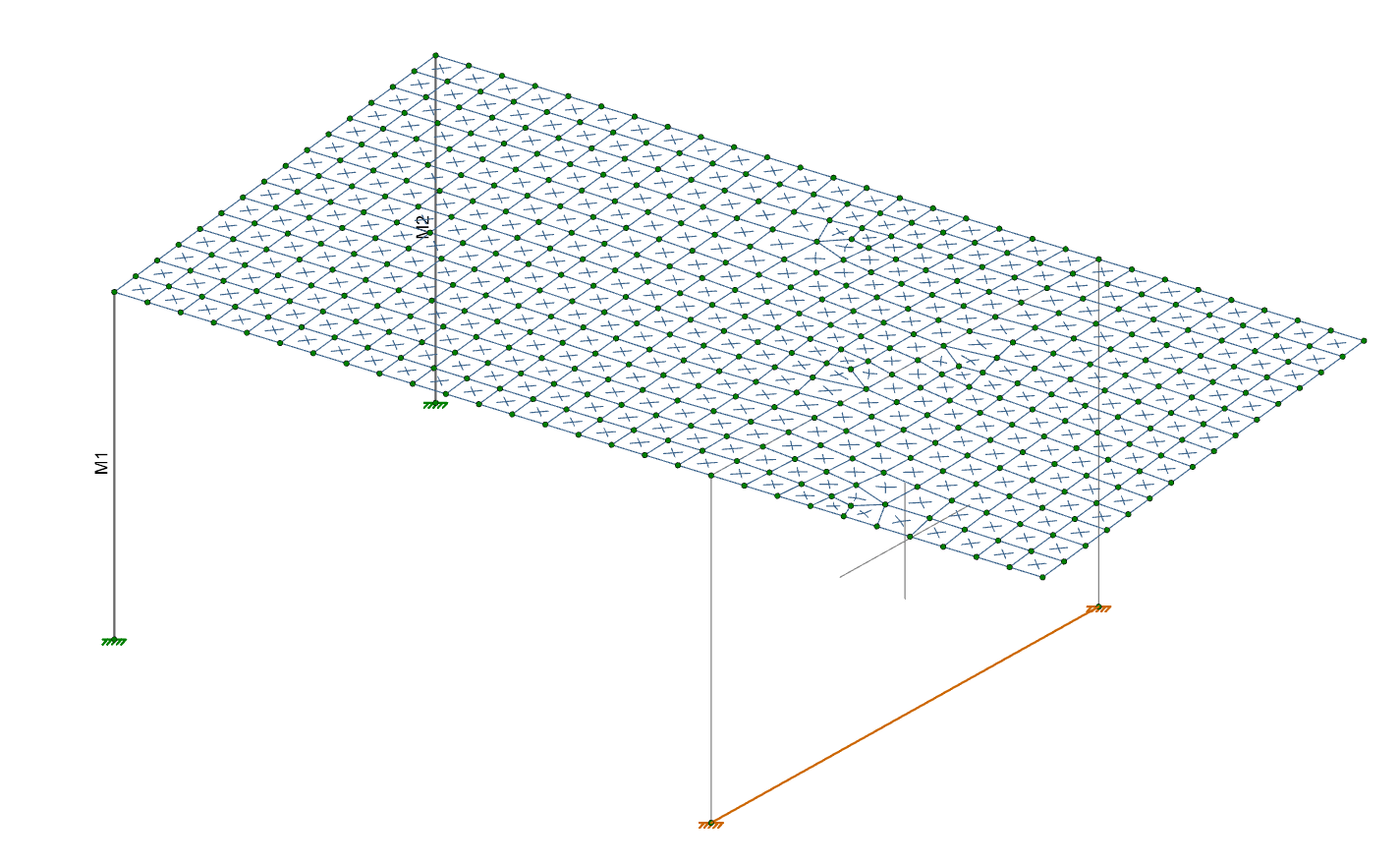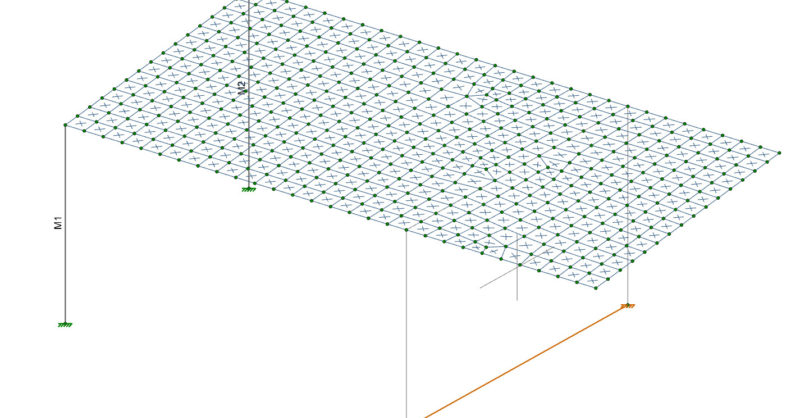Products
Learn
Support
Company
Below is a model of a concrete flat slab (represented by a plate) which is bearing on two columns and a skewed wall. As we know from plate meshing we will obviously have to submesh this slab in order to get accurate results. However if we do an ordinary submesh (as shown below) the plates will not actually connect to the wall.
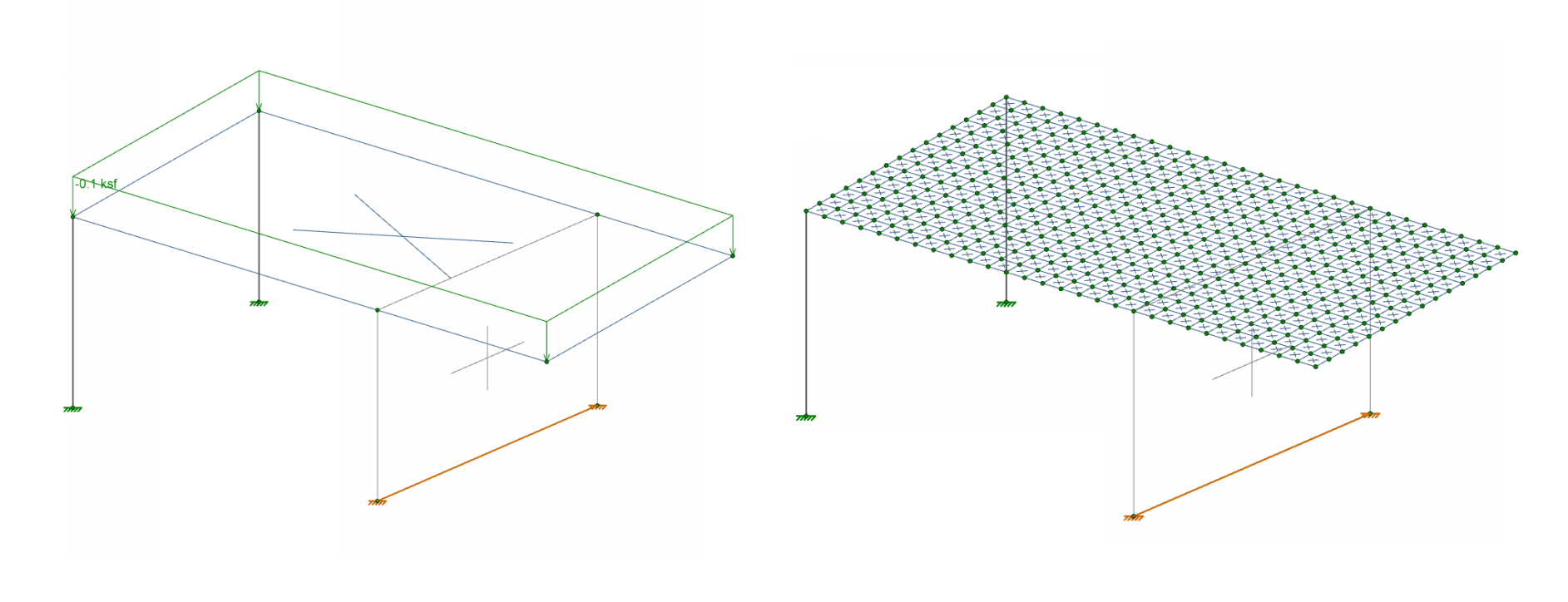
The reason the plates are not connecting to the wall is that plates only connect to elements at their corners, and the only place where a plate corner touches the wall is at the two ends of the wall. You can confirm this by looking at the deflected shape below that the wall (green) is now poking up through the plates (blue) since they are not connected along the span of the wall.
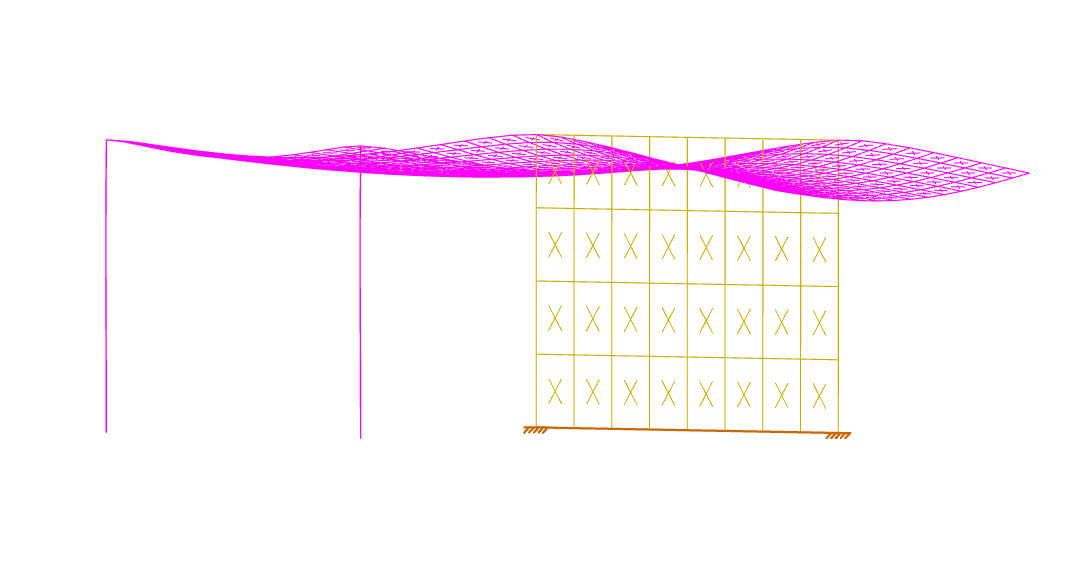
The way to handle this situation is to have a smarter mesh. The Automesh tool can be used to connect the plates to the wall, but we must give that tool some control points to work with. The first step in the example here is to delete the plates, since the automesh tool will draw new plates for us. The four nodes which define the outer corners of the plate must remain, as they will define the boundaries for the automesher. Next, draw a member of any type along the top of the wall.
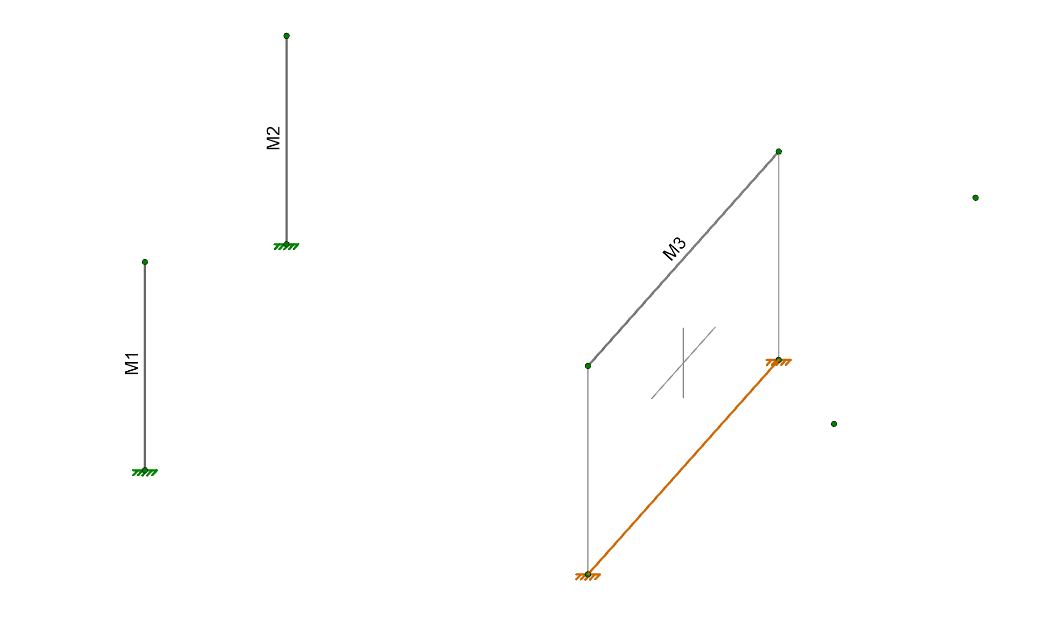
Next, use the Modify – Add Nodes tool to add joints along the length of this dummy member (M3). In this case the plates will be roughly 12”x12”, so I want there to be joints every 12” or so along the length of the member.
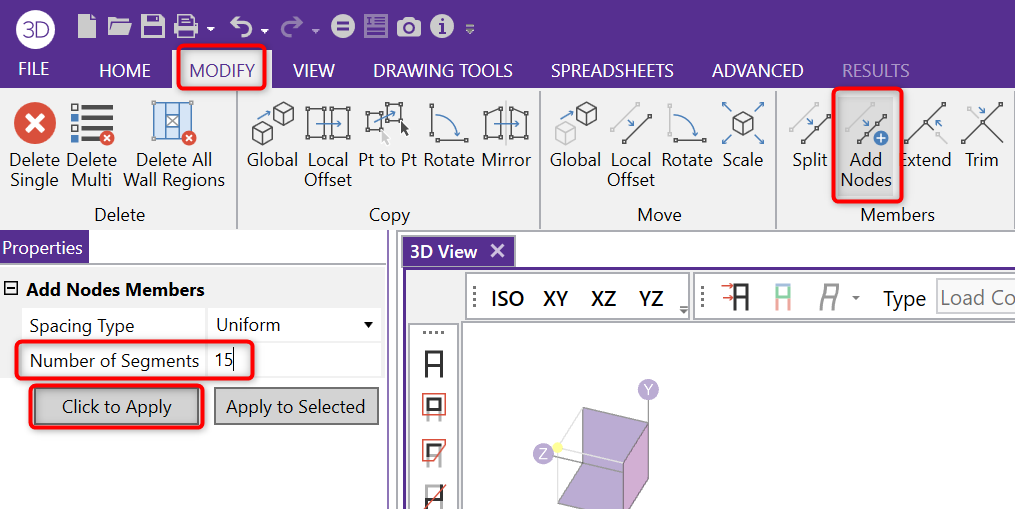
Once the joints have been added the dummy member (M3) can (and should be) deleted so as not to interfere with the stiffness of the wall.
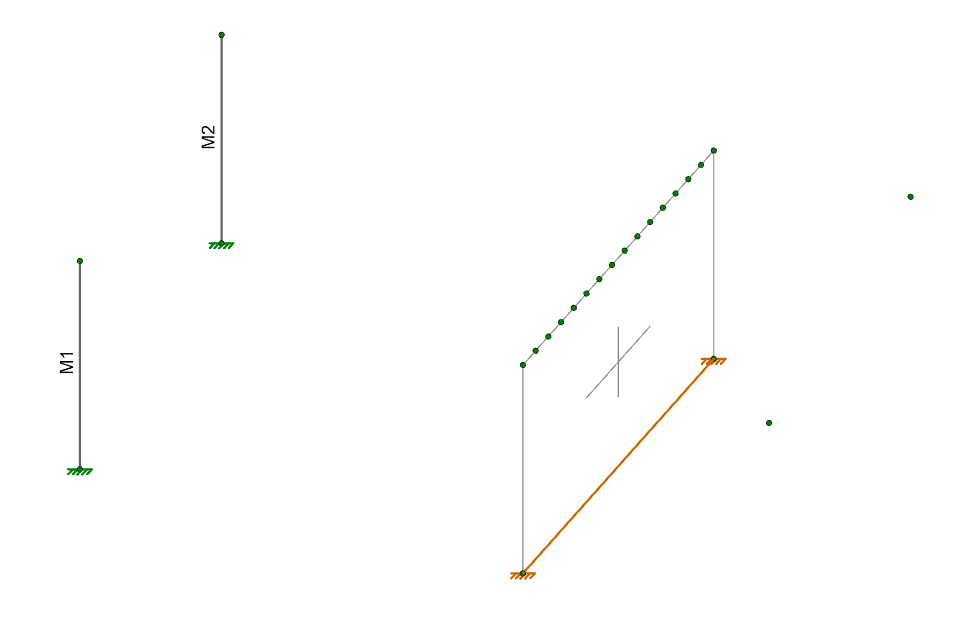
Lastly, you can use the Automesh tool to automesh plates within the four boundary points of the slab. The automesher will automatically connect to all of the interior points (those being the ones now along the top edge of the wall). The end result is a slab which is perfectly connected to the wall.
